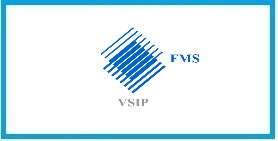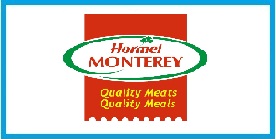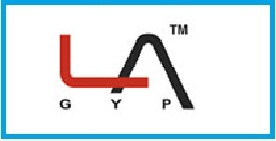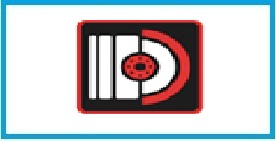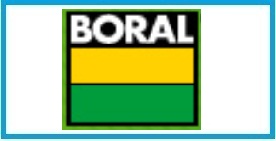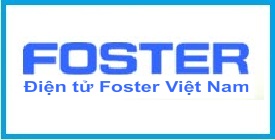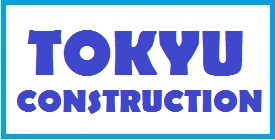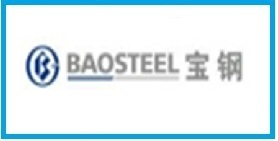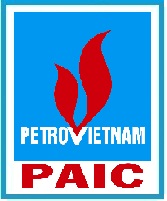 0936 1111 82
0936 1111 82Labor Code Vietnam 2012 - Chapter IX LABOR SAFETY AND HYGIENE
Chapter IX LABOR SAFETY AND HYGIENE
|
|
VIET NAM LABOR CODE 2012(THE LABOR CODE OF VIETNAM)The Labor Code specifies the labor standards; the rights, obligations and responsibilities of the employees, the employers, the labor representative organizations, the employer representative organizations in the labor relation and other relations directly related to the labor relation, the State management of labor |
Chapter IX
LABOR SAFETY AND HYGIENE
Section 1. GENERAL PROVISIONS ON LABOR SAFETY AND HYGIENE
Article 133. Compliance with the law on labor safety and hygiene
All enterprises, agencies, organizations and individuals related to labor and production must comply with the law on labor safety and hygiene.
Article 134. State policy on labor safety and hygiene
1. The State has invested in scientific research and supported the development of the facilities manufacturing the equipment of labor safety and hygiene, and personal protective equipment.
2. Encouraging the development of services on labor safety and hygiene.
Article 135. Program of labor safety and hygiene
1. The Government has decided the national Program on labor safety and hygiene.
2. The provincial People's Committee shall build and present the people's Council to decide the labor safety and hygiene program within the scope of locality and put into the plan of social and economic development.
Article 136. National technical regulations on labor safety and hygiene
1. The Ministry of Labour, Invalids and Social Affairs shall preside over and coordinate with the ministries and sectors and localities to build, issue and make guidance for implementation of thenational technical regulations on labor safety and hygiene.
2. The employer shall rely on the standards and national technical regulations, the local technical regulations on labor safety and hygiene to build the rules and working procedures to guarantee the labor safety and hygiene in accordance with each type of machinery, equipment and workplace.
Article 137. Guaranteeing the labor safety and hygiene at the workplace
1. When newly building, expanding or improving the works and facility for production, utilization, preservation and storage of machinery, equipment, materials and substances with strict requirements on labor safety and hygiene, the investor and employer must make a plan on the measures to guarantee the labor safety and hygiene for the workplace of employees and the environment.
2. When manufacturing, using, preserving and transporting the type of machinery, equipment, materials, energy, electricity, chemicals, plant protection drugs, the change of technology and import of new technology must comply with the national technical regulations on labor safety and hygiene or the standar on labor safety and hygiene at workplace that has been published and applied.
Article 138. Obligations of the employer and employe for the work of labor safety and hygiene
1. The employer has the following obligations:
a) To ensure the workplace meets the requirements of space, ventilation, dust, steam, toxic gas, radiation, electro magnetic field, heat, humidity, noise, vibration and other harmful elements specified in the relevant technical regulations and those factors must be tested and measured periodically.
b) To ensure the conditions on labour safety and hygiene for machinery, equipment, workshop to reach the national technical regulations on labor safety and hygiene or standards on labour safety and hygiene at the workplace that has been published and applied.
c) Testing and assessing the dangerous and harmful factors, harmful at workplace of the facility to set out the exclusion measures to minimize hazards, harmfulness and improve the working conditions and health care for the employees;
d) Periodically testing and maintaining the machinery, equipment, workshops and warehouses;
dd) There must be instruction table on labour safety and hygiene for the machinery, equipment and workplace and it should be put at the legible and visible place labour safety and hygiene the workplace;
e) Gathering opinions of the representative organization of labor collective at the grassroots level when making a plan and implementing the activities to guarantee the labour safety and hygiene.
2.The employee has the following obligations:
a) To comply with the regulations, procedures and rules on the labour safety and hygiene related to the work and duties assigned.
b) To use and maintain the personal protective equipment already equipped; the equipment of labor safety and hygiene at the workplace;
c) To promptly report to the responsible person upon detecting the risk of occurrence of occupational accident and disease, toxic or dangerous incident, to participate in emergency and remedy the consequence of occupational accident upon the employer’s order.
Section 2. OCCUPATIONAL ACCIDENT AND DISEASE
Article 139. Person performing work of labor safety and hygiene
1. The employer must appoint a person performing the work of labor safety and hygiene. For the production and business facilities in the areas with the risks of occupational accidents and diseases and with the employmwnt of 10 employees or more, the employer must appoint a person with relevant expertise to be in charge of the work of labor safety and hygiene
2. The person performing thework of labor safety and hygiene must be trained on the labor safety and hygiene
Article 140. Handling of incidents and emergency response
1. In the handling of incidents and emergency response, the employer has the following responsibilities:
a) Making a plan for handling of incidents and emergency response and periodically organizing the exercises;
b) Being equipped with the technical and medical facilities to ensure the timely rescue and first aid upon the occurrence of labor incidents and accidents;
c) Immediately implementing the remedial measures or immediately ordering the cease of operation of machinery, equipment, workplace likely to cause occupational accidents and diseases.
2. The employee has the right to refuse to perform the work or quit the workplace and still get payment of full salary and is not considered violation of labor discipline upon clearly seeing the risk of occurrence of occupational accidents and diseases, seriously threatening his life or health and he must immediately notify the person in direct charge. The employer shall not force the employee to continue that work or return to that workplace if the danger has not been remedied.
Article 141. Allowance in kind for the employee working in dangerous and hazardous conditions
The person working in dangerous and hazardous conditions shall receive the allowance in kind as prescribed by the Ministry of Labour, Invalids and Social Affairs
Article 142. Occupational accident
1. Occupational accident is an accident that causes injury to any part and function of the body or death to employee occuring during the working process associated with the implementation of work and labor tasks.
This regulations applies to trade apprentice, trainee and probationer
2. The person suffering occupational accident must receive a timely emergency and considerate treatment.
3. All occupational accidents and diseases and other serious incidents at the workplace must be declared, investigated, recorded, statisticed and periodically reported as prescribed by the Government.
Article 143. Occupationaldisease
1. Occupational diseases are diseases caused by the harmful working conditions of the occupation effecting on the employee
The list of occupational diseases issued by the Ministry of Health in coordination with the Ministry of Labour - Invalids and Social Affairs after gathering opnions of the General Confederation of Labour of Vietnam and the representative organizations of employer
2. The person suffering from occupational disease must be treated carefully, examined health periodically and has separate health record.
Article 144. Responsibilities of the employer for the person suffering occupational accident and disease.
1. Making the payment of the co-payment costs and the costs not included under the list paid by the health insurance for the employee participating in health insurance and making full payment of all medical expenses from the first aid, emergency to the stable treatment for the employees not participating in health insurance.
2. Making full payment of salary under the labor contract to the employee suffering the occupational accident and disease and having to take leave during treatment.
3. Making compensation to the employee suffering the occupational accident and disease as prescribed in the Article 145 of this Code.
Article 145. Rights of the employee suffering the occupational accident and disease
1. The employees participating in compulsory social insurance are entitled to enjoy the regime of occupational accident and disease in accordance with the Law on social insurance.
2. The employee subject to participating in compulsory social insurance but the employer have not paid the social insurance premiums to the social insurance agency, he shall be paid an amount corresponding to the regime of occupational accident and disease under the Law on social insurance.
The payment can be made once or every month as agreed by the parties.
3. The employee with occupational accidents and disease not due to the fault of employee and reduced working capacity from 5% or more shall be compensated by the employer at the following rate:
a) At least equal to 1.5 month' salary under the labor contract if the employee is reduced from 5.0% to 10% of his working capacity and then every 1.0% increase, an addition of 0.4 months of salary under the labor contract if reduced working capacity from 11% to 80%;
b) At least 30 months' salary under labor contract for the employee reduced his working capacity from 81% or more or for the death of the employee’s relative from the occupational accidents.
4. Where due to the fault of the employee, he also receives an allowance of an amount at least equal to 40% of the rate prescribed in Clause 3 of this Article.
Article 146. Prohibited acts in the labor safety and hygiene
1. Making payment in cash in stead of allowance in kind
2. Concealing, declaring or reporting falsely the truth about the occupational accident and diseases.
Section 3. PREVENTION OF OCCUPATIONAL ACCIDENT AND DISEASES.
Article 147. Inspection of machinery, equipment and materials with strict requirement on labor safety
1. The types of machinery, equipment and materials with strict requirements on labor safety must be inspected before being put into use and periodically inspected during the process of utilization by the organization of technical inspection of labor safety.
2. The list of machinery, equipment and materials with strict requirements on labor safety is issued by the Ministry of Labour, War Invalids and Social Affairs.
3. The Government regulates the conditions of the organization of technical inspection of labor safety.
Article 148. Plan for labor safety and hygiene
Each year, upon making plan for production and business, the employer must make a plan and measures for the labor safety and hygiene and improve the working conditions.
Article 149. Means ofpersonal protectionin labor
1. The employee who performs work with the toxic and dangerous factors shall be fully equipped with the means ofpersonal protection by the employer and must use them during the working process in accordance with the Ministry of Labour - Invalids and society.
2. The means ofpersonal protection must meet the standard of quality
Article 150. Training on labor safety and hygiene
1. The employer, person performing work of labor safety and hygiene must take part in a training course on the labor safety and hygiene and is examined, tested and granted certificate performed by the organization of training service operation on labor safety and hygiene.
2. The employer must organize the training on labor safety and hygiene to the employee, trade apprentice, trainee upon recruitment and personnel arrangement; making guidance of regulations on labor safety and hygiene to the person visiting and working at the facility under the scope of management of the employer.
3. The employees performing work with strict requirements on labor safety and hygiene must attend a training course of labor safety and hygiene, taking examination and receiving the certificate.
4. The Ministry of Labour - Invalids and Social Affairs stipulates the conditions of the organization of training service operation on labor safety and hygiene; building a framework program of training on labor safety and hygiene; the list of work with strict requirements on labor safety
Article 151. Information on labor safety and hygiene
The employer must announce the complete information on the situation of occupational accidents, occupational diseases, dangerous and harmful factors, and measures to ensure the labor safety and hygiene at workplace for the employee
Article 152. Health care for employee
1. The employer must rely on the health standards regulated for each type of work for recruitment and arrangement of employees.
2. Each year, the employer must organize periodic health examinations for the employee, including the trade apprentice, trainee, female employees must receive the gynaecologyexamination, person who performs hard and hazardous work, the disabled and juvenile employee, elderly employee health must be examined health at least once for every 6 months.
3. The employees working in conditions at risk of occupational disease must be examined the occupational disease as prescribed by the Ministry of Health.
4. The employee with occupational accident and disease must receive a medical examination for disability rating, determination of the degree of reduction of working capacity and shall be under the treatment, working rehabilitation and in convalescence in accordance with the law.
5. The employee after suffering from occupational accident and disease, if being able to keep on working, he shall be arranged a job suitable to his health in accordance with the conclusions of the Medical Examination Council on labor
6. The employer must manage the health records of employees and a general monitoring record in accordance with the regulations of the Ministry of Health.
7. The employee working at the place where there are toxic and infectious factors, upon the end of the working hours, the employer must guarantee the measures of decontamination and sterilization.
Related News
- Labor Code of Vietnam 2012 - Chapter I GENERAL PROVISIONS
- Labor Code of Vietnam 2012 - Chapter II EMPLOYMENTS
- Labor Code of Vietnam 2012 - Chapter III LABOR CONTRACT
- Labor Code of Vietnam 2012 - Chapter IV VOCATIONAL LEARNING AND TRAINING, VOCATIONAL SKILL AND GRADE IMPROVEMENT
- Labor Code of Vietnam 2012 - Chapter V DIALOGUE AT THE WORKPLACE, COLLECTIVE NEGOTIATION, COLLECTIVE LABOUR AGREEMENT
- Labor Code of Vietnam 2012 - Chapter VI SALARY
- Labor Code of Vietnam 2012 - Chapter VII WORKING HOURS AND BREAK HOURS
- Labor Code of Vietnam 2012 - Chapter VIII LABOR DISCIPLINE AND MATERIAL RESPONSIBLITY
- Labor code Vietnam 2012 - Chapter X PRIVATE REGULATIONS FOR FEMALE EMPLOYEE
- Labor code Vietnam 2012 - Chapter XI EXCLUSIVE PROVISIONS FOR UNDER AGE EMPLOYEE AND A NUMBER OF TYPES OF EMPLOYEE




